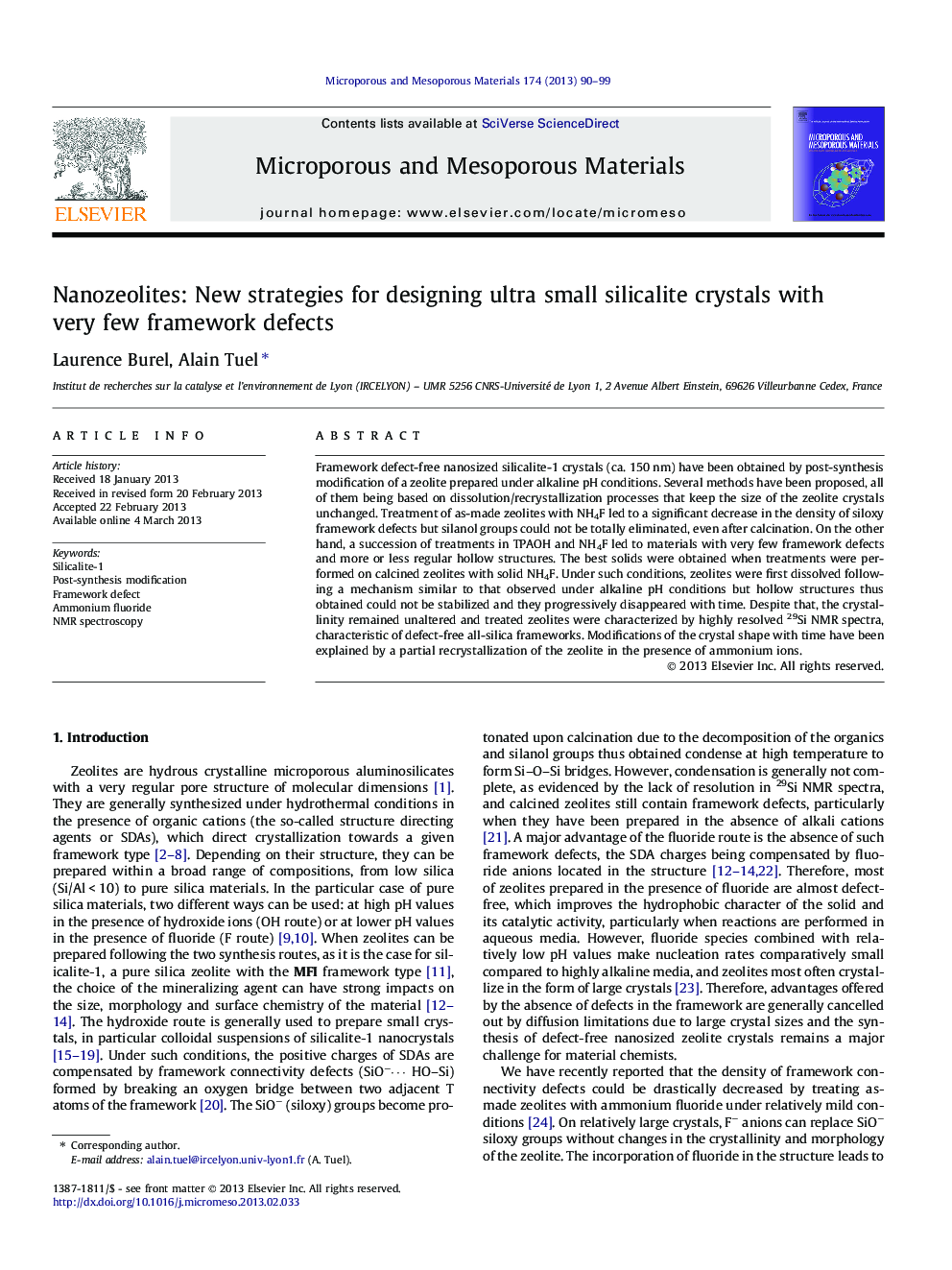| Article ID | Journal | Published Year | Pages | File Type |
|---|---|---|---|---|
| 73640 | Microporous and Mesoporous Materials | 2013 | 10 Pages |
Framework defect-free nanosized silicalite-1 crystals (ca. 150 nm) have been obtained by post-synthesis modification of a zeolite prepared under alkaline pH conditions. Several methods have been proposed, all of them being based on dissolution/recrystallization processes that keep the size of the zeolite crystals unchanged. Treatment of as-made zeolites with NH4F led to a significant decrease in the density of siloxy framework defects but silanol groups could not be totally eliminated, even after calcination. On the other hand, a succession of treatments in TPAOH and NH4F led to materials with very few framework defects and more or less regular hollow structures. The best solids were obtained when treatments were performed on calcined zeolites with solid NH4F. Under such conditions, zeolites were first dissolved following a mechanism similar to that observed under alkaline pH conditions but hollow structures thus obtained could not be stabilized and they progressively disappeared with time. Despite that, the crystallinity remained unaltered and treated zeolites were characterized by highly resolved 29Si NMR spectra, characteristic of defect-free all-silica frameworks. Modifications of the crystal shape with time have been explained by a partial recrystallization of the zeolite in the presence of ammonium ions.
Graphical abstractFigure optionsDownload full-size imageDownload as PowerPoint slideHighlights► Nanosized silicalite-1 crystals can be obtained with very few framework defects. ► The density of connectivity defects can be adjusted in nanocrystals. ► Example of hollow, defect-free silicalite-1 nanocrystals are reported for the first time. ► Calcined nanocrystals can re-crystallize in the presence of ammonium fluoride.
